OUINO contains more vocabulary words than any other language-learning app on the market. We use a combination of listening, reading, translations, image associations and writing exercises to force your brain to form multiple bonds with the words. You will learn vocabulary words independently of all other aspects of language learning, so you can really focus on the words you are learning. In this video, we’ll show you how to use the vocabulary module to its full potential.
Ouino vocabulary lessons. In Ouino, every single vocabulary word is supported by not only text and audio, but also representative images for your brain to create a visual association with the word. Many of the adjectives and adverbs are also supported by an example sentence to reinforce even more. When you take a Ouino vocabulary lesson, listen attentively and try to repeat the words out loud. If you are on the bus or in a public place, you might want to practice your pronunciation later to avoid a few stares. Then again, people talking to themselves on public transport is not something that is unheard of. Your own weirdness is in your hands. Ouino is in your pocket if you need it, but it will also be on your computer when you get home.
Adjust the settings menu. You can play with the settings menu (gear icon at the top right of your screen) to adjust the lessons to your learning style. Change the pronunciation playback speed (PPS) of the audio and the number of times words are repeated. You can also change the amount of time between each word and change the subtitles.

As vocabulary is reduced, so are the number of feelings you can express, the number of events you can describe, the number of the things you can identify! Not only understanding is limited, but also experience. Man grows by language. Whenever he limits language he retrogresses!Sheri S. Tepper
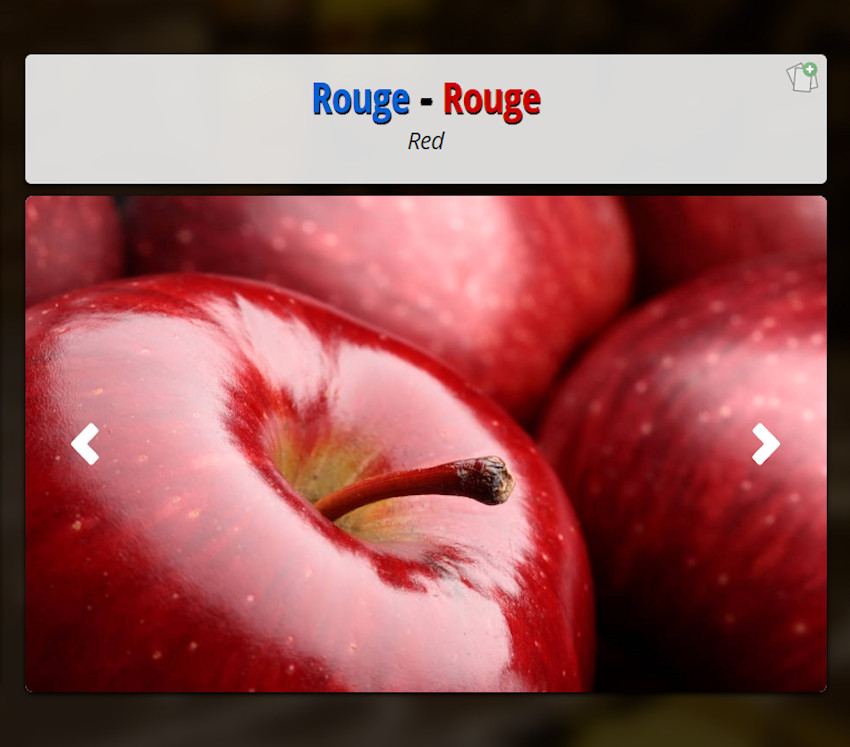
As a solution to this problem, we have included a few features in the Vocabulary lessons that will help you immensely to identify these dreaded genders. 1) Audio; masculine words are recorded by a male speaker and feminine words are recorded by a female speaker. 2) Visual; masculine words are written in blue lettering and feminine words are written in red lettering. Easy enough? If you ever have any doubts on the gender of a word, just try to recall the audio and visual of the word within the Ouino Vocabulary module.
These two features, along with the few gender tips in the Building Blocks module, will give you a big head start in learning the right gender of words.
When you load the Vocabulary exercises, you will see 4 different categories. There are no strict rules about how to use these exercises to your advantage, but the final goal should be to get the Fluency Award in the Fluency Sprint. This can be very difficult. If you can do that, Bingo! You are fluent in that category and you have a nice Red Ribbon to prove it.
How you reach that level is entirely up to you. If you are the person with the perfect photographic memory or if you have learned these words somewhere else in the past and just want to see if you still remember them, you can skip a level or skip right to the Fluency Sprint exercise and try to get that Fluency Award. Your score will be updated on the previous levels also.
For most language learners, skipping right to the Fluency Sprint is not the best way to go. If this is new material to you, we have observed that trying to save time by skipping right to the Fluency Sprint can actually be counterproductive. Most people actually end up taking a lot longer to get the Fluency Award than taking each exercise in order.
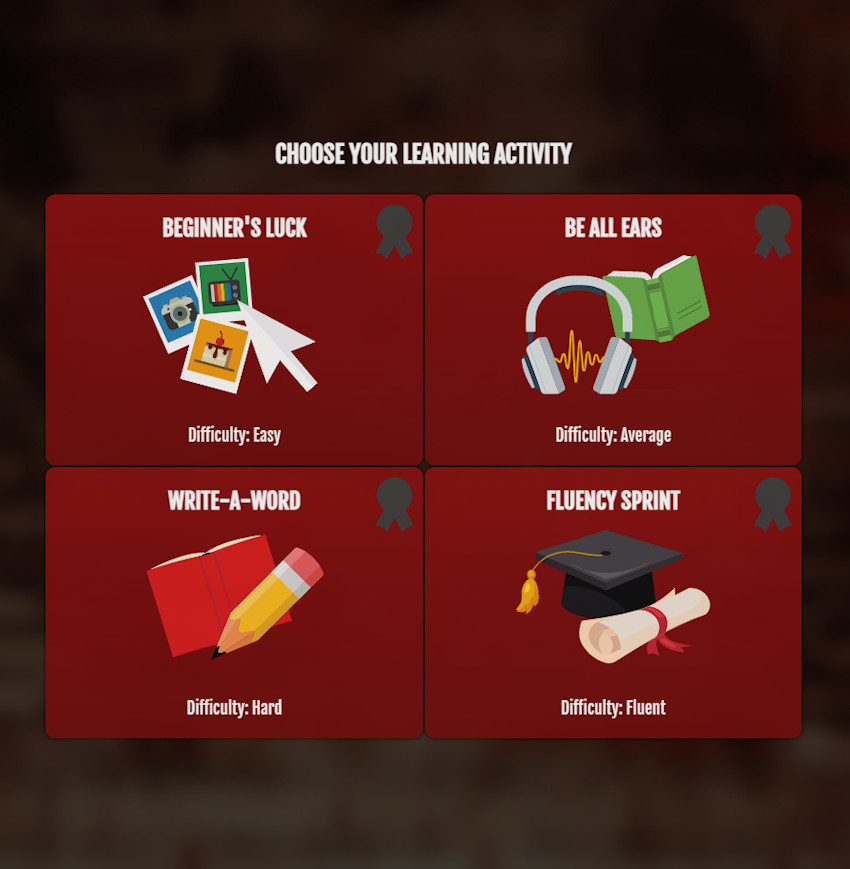
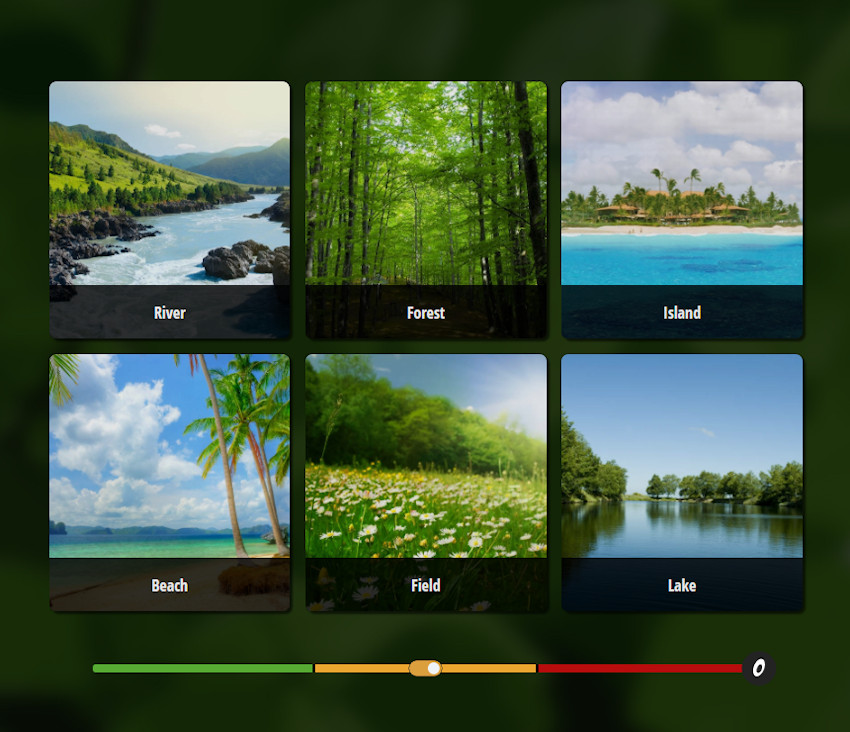
Level Two: Be All Ears. The first thing you will notice when you get to this second level is that it is very similar to the Beginner’s Luck exercise. The main difference is that the visual support of the written words have been removed. The purpose of this exercise is to train your ear to listen for the words without seeing them written down. It will also increase the repetition to help you get ready for the next level. Most people tend to get the Fluency Award fairly quickly if they completed the first level.
We have also included 3 optional hints for you to choose from. You can use these hints if you need help completing the exercise when you can’t quite remember a particular word. Keep in mind that each hint will cost you some points. Your points at the end of the exercise will reflect your final score. The more hints you use, the lowest your final score will be. Use the hints carefully and only when you really need them. Here’s a little breakdown of the hints available:
The “Add Letter” hint. Adds a correct letter somewhere in the word. This is very valuable particularly with shorter words. Cost: 5 points.
The “Scramble” hint. Adds all the correct letters of the word in a random order. Cost: 10 points.
The “Hear Answer” hint. Allows you to hear the answer out loud, all you have to do is to write it down, but it’s very costly. Cost: 20 points
Each correct answer is worth 65 points and a wrong answer will cost you 50 points. However, you will lose only 5 points for minor spelling mistakes or missing accents. The only way to get a Fluency Award in this exercise is to complete it without using any hints, and get your spelling right. It can be quite the challenge, but by now you have seen the words many times so you should start getting familiar with them. Do this exercise until you feel comfortable typing the words and move on to level 4.
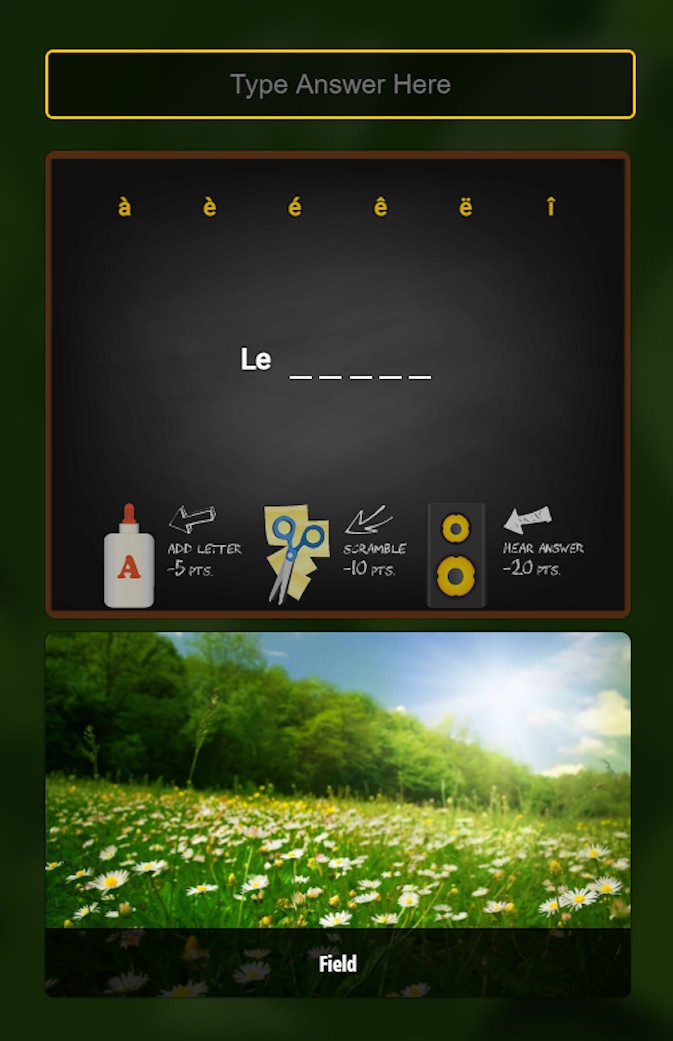
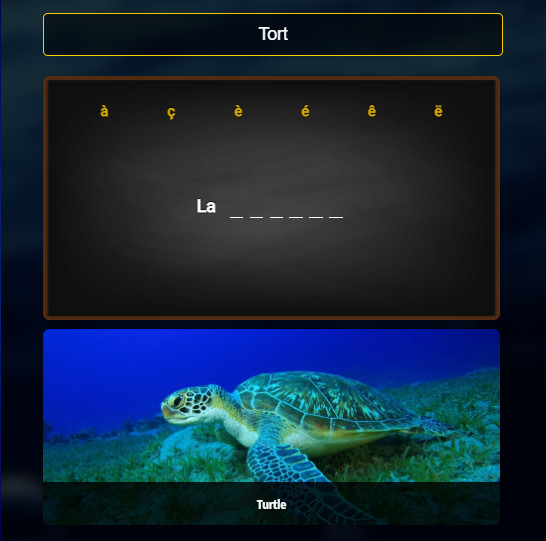
These four levels may seem like they take a long time to complete, but in reality you will find that this method will allow you to learn lots of vocabulary very quickly. Like previously mentioned, we have seen many people trying to take the lesson and skipping right to the Fluency Sprint exercise. In general, they end up taking a lot more time to get the same results. We also found that if asked to take the exercise again after a few weeks, they scored lower than those who took all 4 exercises in half the time. That’s because taking all 4 levels makes you interact with the words more often and in different ways, which greatly helps with memorization.
After being fluent in a few categories, go practice what you learned in the real world and begin to see the real benefits of learning a new language!